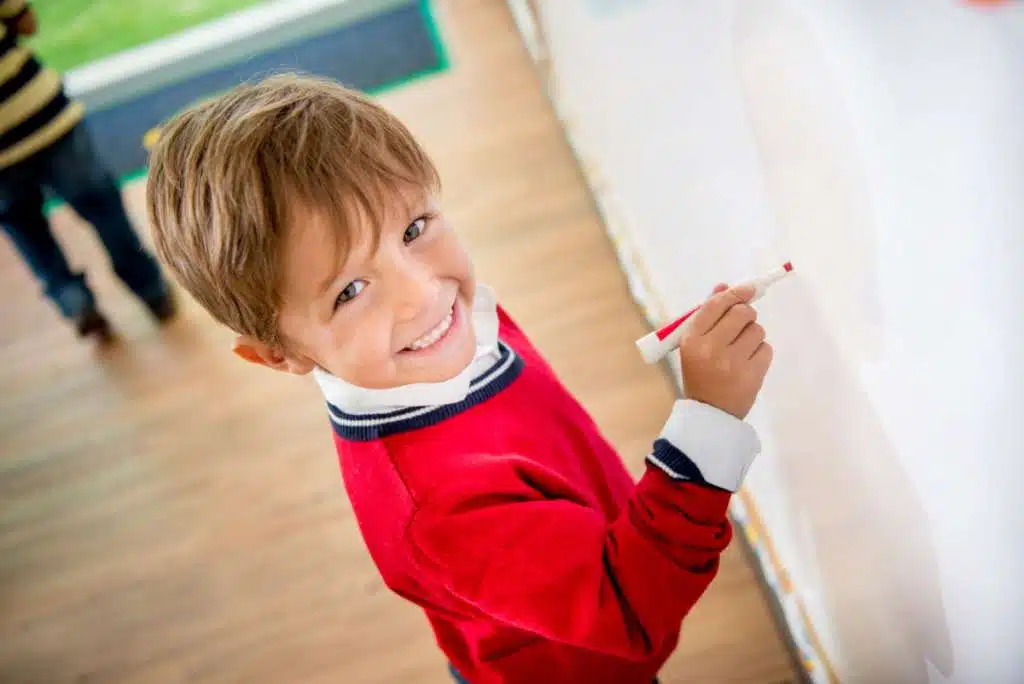
How to Teach Grade Two Music Lessons
Ever wondered how to write and teach an effective Grade 2 music lesson program?
This blog post will show you how to:
Make activities educational AND enjoyable.
Match your curriculum needs.
Keep the children engaged.
Without spending hours and hours planning.
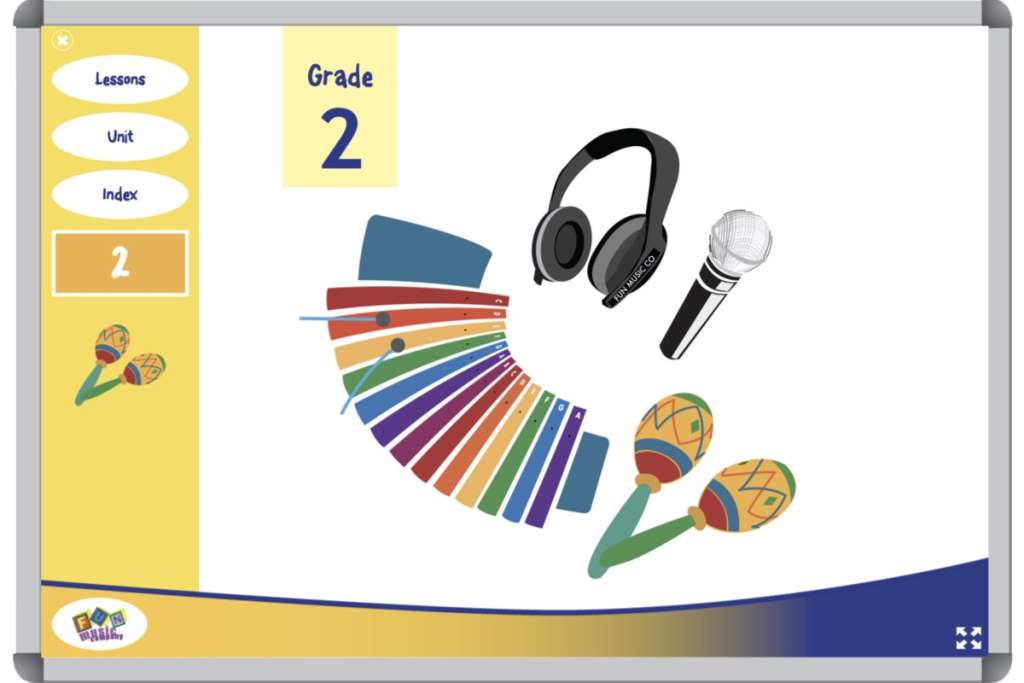
Getting started Teaching Grade Two Music.
Teaching Year 2 students can be a challenging journey. It can be difficult to find the perfect balance between progression and meeting curriculum needs.
In this post, I’ve listed out the 5 most powerful tips for teaching grade two music and what to keep in mind.
I’m not going to sugarcoat it. Teaching music and writing a full music teaching curriculum for Grade 2 is hard! From the outset it requires lots of commitment, energy, hard work, and practice. It may take many hundreds of hours in researching and planning content.
Many worldwide State and National Curriculum documents exist. However, governments leave curriculum planning and programming up to school leaders and teachers. It is often up to the teacher to decide how curricula should be translated into the classroom.
Most teachers create their own music teaching resources, or share with colleagues.
However, this creates a few problems:
- Inconsistency between what’s taught in schools.
- Quality control with resources found online.
- Unnecessary workload for teachers.
If you’re serious about teaching grade two music lessons, this article can show you how to get started. If you enjoy those initial ideas, we can steer you in the right direction of stream-lining the process.
Let’s dive into our top 5 tips for teaching year 2 music classes from scratch, even if you’re a beginner to this subject!
About the Authors
The five tips in this blog post come straight from the joint-founders of the Fun Music Company, Janice & Kevin Tuck.
The Fun Music Company has served over 12,000 K-6 teachers over the past two decades. They have served teachers in 149 countries across the world. They make it possible to teach FUN music classes in any school, even if teachers have little or no prior knowledge.
Tip #1. Learn about and understand Grade Two children
Composer Carl Orff once wrote:
“Tell me, I forget. Show me, I remember. Involve me, I understand.”
This quote emphasizes the importance of active learning and engagement. It is really important in developing understanding when teaching music.
In the second grade children are in a phase where they’re trying to make sense of both the larger world and their personal lives.
They crave structure, order, and a sense of safety in their everyday environments.
They thrive on the predictable patterns. Series’ of books, familiar TV shows, and set routines offer comfort. They crave something known in a world that’s full of mysteries.
Despite their eagerness to learn, second-graders can become risk-averse. They can also be frustrated when things don’t go according to plan.
A grade 2 teacher plays a crucial role. They model how to laugh off their own errors and ease anxiety around getting everything “just right.”
Therefore, integrating these insights into a grade 2 music programs should include :
- Creating a consistent (somewhat predictable yet detailed) music course outline which progresses every lesson.
- Active and practical musical engagement activities that offer success in every lesson.
- Content that has progression of detail and develops a range of musical skills.
- Include active listening which develops a musical knowledge base.
- Offer a ”light”, FUN, “play-like” approach emphasizing creativity and improvisation.
Tip #2. Create a consistent outline that gives structure in every Grade Two music lesson.
Grade two children crave routine. They thrive on structure, and repetition. This, with just a little variety thrown in to spice things up will keep grade 2 students loving their music lessons!
Therefore, find a consistent outline for your classes that works. The Fun Music Company curriculum has a consistent structure that is repeated consistently, with different activities placed into it for variety.
Here is a typical outline from a Fun Music Company Curriculum lesson for grade two:
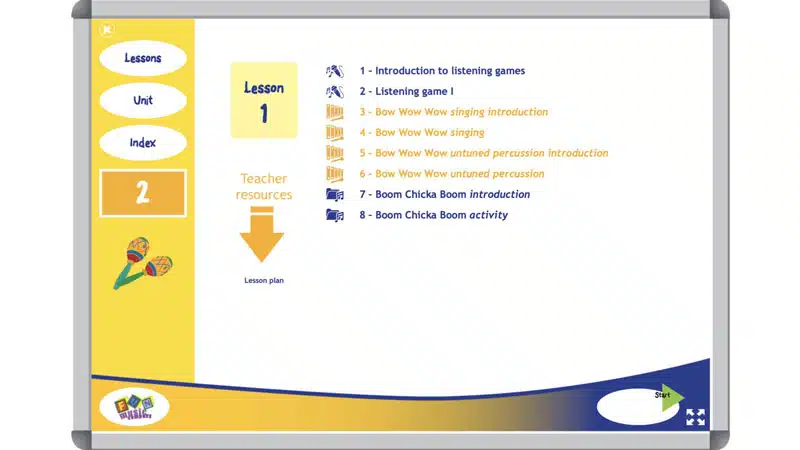
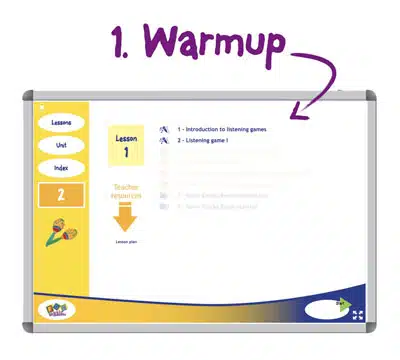
Routine Part 1 – Warmup exercise, activity or game
Everyone who has ever exercised knows the importance of warming up. Not warming up properly and launching into intense exercise or sport can cause injury. However, warming up in a teaching context is more about giving students something:
- Which is fun, that will “hook” them into the learning.
- Something that they can achieve right away.
- Something that progresses over time, so that they don’t get bored.
Finding the right combination of these things isn’t easy! It has taken us years and years here at the Fun Music Company to find the right combination of teaching ideas, such as this one for grade two music classes.
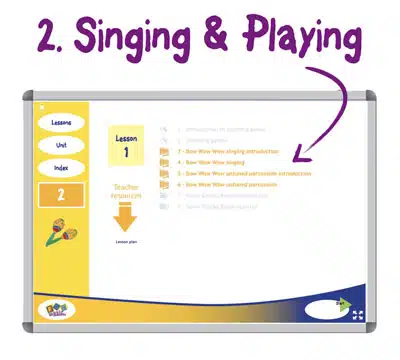
Routine Part 2 – Active Singing and Playing Music
For students to benefit from music lessons, they must SING and PLAY music.
For years, parents believed in the Mozart Effect. This was the idea that children would get neurological benefits from listening to classical music. That has since been found to be fanciful at best. However, what has been found over and over again is that active involvement in singing and playing music is truly beneficial.
For this reason, any music program must be built on a foundation of children singing and playing music. This should be quality music, chosen by professional educators. This is why the Fun Music Company curriculum program for grade two is built with singing and playing at the core.
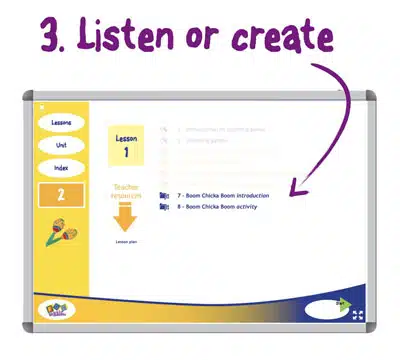
Routine Part 3 – Active Music Listening or Creative Activity.
The third part of the lesson structure is where students will:
Actively LISTEN and engage with music.
and/or
Create their OWN music.
These elements of the curriculum can, and should have a lot of variety. However, placing it inside a structure will be really beneficial for grade two music classes.
In Grade two, these activities nearly always appear at the end of lessons. This is when students have already had a good warmup through engaging actives and involvement in singing and playing.
Tip #3. Use Active learning and Practical strategies in teaching Grade 2 Music Lessons.
“learning is an active process. We learn by doing. Only knowledge that is used sticks in your mind.”
Dale Carnegie.
Music, of course is an active subject. It goes without saying that students will not remember things where they don’t actively engage and DO them.
However, this is more than just having students play instruments and sing.
Yes, singing and playing IS active learning. However, real active learning is where students are involved in the learning learning process, rather than passively taking on information.
So students need to make decisions. They need to actively be involved in discussions and questions such as:
How can we make this performance better?
What does it sound like when I play an instrument in this particular way?
What should we do to make a piece of music that will express a particular feeling or emotion?
Yes, this CAN be done in Grade two music lessons. This might seem difficult, but it isn’t really. If you have the framework, and you’re not starting from scratch, these kind of questions flow naturally.
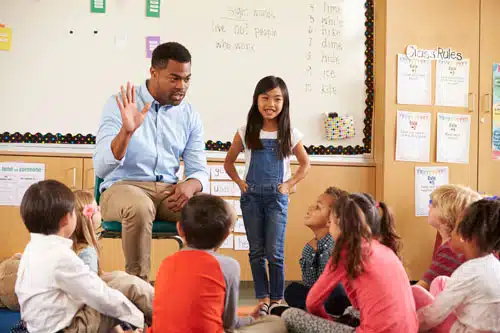
Tip #4 Develop a range of musical skills in grade two music students
Creativity and improvisation are critical for a well rounded education in grade two music.
Here at the Fun Music Company, we have spent the last fifteen years studying music curricula. We’ve looked at the Australian National curriculum. Firstly in its original form, and then in its current generation. We have also dived deep into the state-based curricula in Australia.
We’ve also looked internationally at every curriculum program we’ve encountered. We’ve looked in detail at the US Common Core Arts Standards, and the National Curriculum of England and Wales. We’ve worked with other curricula from US states, New Zealand, and Canadian provinces.
And do you know what we’ve found? Every music curriculum in the world contains the same basic content. It’ll be packaged and phrased in different ways, but it is always there.
Every music curriculum in the world can boil down to three basic areas:
#1 – Students should actively SING and PLAY music.
#2 – Students should develop their listening and aural skills.
#3 – Students should compose and create their own music.
In our experience, it is #3 that presents the biggest challenge for many teachers.
It is partly the nature of music and the traditions around music education. Think about the difference in expectations of the general population between music and visual art.
In the tradition of music, students are expected to stand on a stage and give a concert. They are judged, rightly or wrongly, on how proficient they are at reproducing music that someone else has created.
As a parent, if we go to a concert at our child’s school, we’d expect to hear a certain thing. We’d hear folk songs, popular songs and performances of Beethoven’s Fur Elise on the piano.
In visual art, if we went to a school exhibition our expectations would be different. We would NOT expect to see reproductions of the Mona Lisa, or Van Goh’s starry night. In fact, if we did we’d question if the teacher was doing this right thing!
We would want to see the children’s original work. If a tiny child in kindergarten makes a few squiggles on the page and says its a person … their parents will say “That’s beautiful!!” … keep going!
If a child makes a scratchy sound on an instrument parents will tell them to stop!
We can’t change that overnight. However, what we CAN do is make sure that music lessons at school contain more creative activity.
In grade two music lessons, we must include a good proportion of creative and improvisation activities. This way, students will start to become comfortable creating their own music.
Creative and improvisational activities in Grade Two music:
Tip #5 – Don’t reinvent the wheel teaching grade two music lessons.
You’ve heard the metaphor before. According to Wikipedia, to reinvent the wheel is to
“attempt to duplicate – most likely with inferior results – a basic method that has already been created or optimised by others.”
It might seem an overstatement that teachers are asked to reinvent the wheel in developing grade two music lessons – but unfortunately, it isn’t!
It seems crazy that teachers are expected to create their own lesson plans. They spend hundreds, if not thousands of hours searching the internet. They spend hours writing and rewriting lessons. They spend hours finding songs that suit their students. They spend hours going through the curriculum, trying to find activities that work.
That is why THE most important tip in this article is this one:
Don’t do it all yourself.
There are hundreds and thousands of webpages on the internet about teaching music lessons. Even a search for ‘grade two music lessons’ will give you hundreds of pages.
However, starting with free searches on Google will take you more time, not less. What you need is a complete grade two music curriculum, that you go through step-by-step.
Sure, you can adapt and change things for your particular needs. However, you need the basic framework and structure set, so that you can walk in and teach.
So check out the Fun Music Company grade two music curriculum and stop reinventing the wheel for no reason!


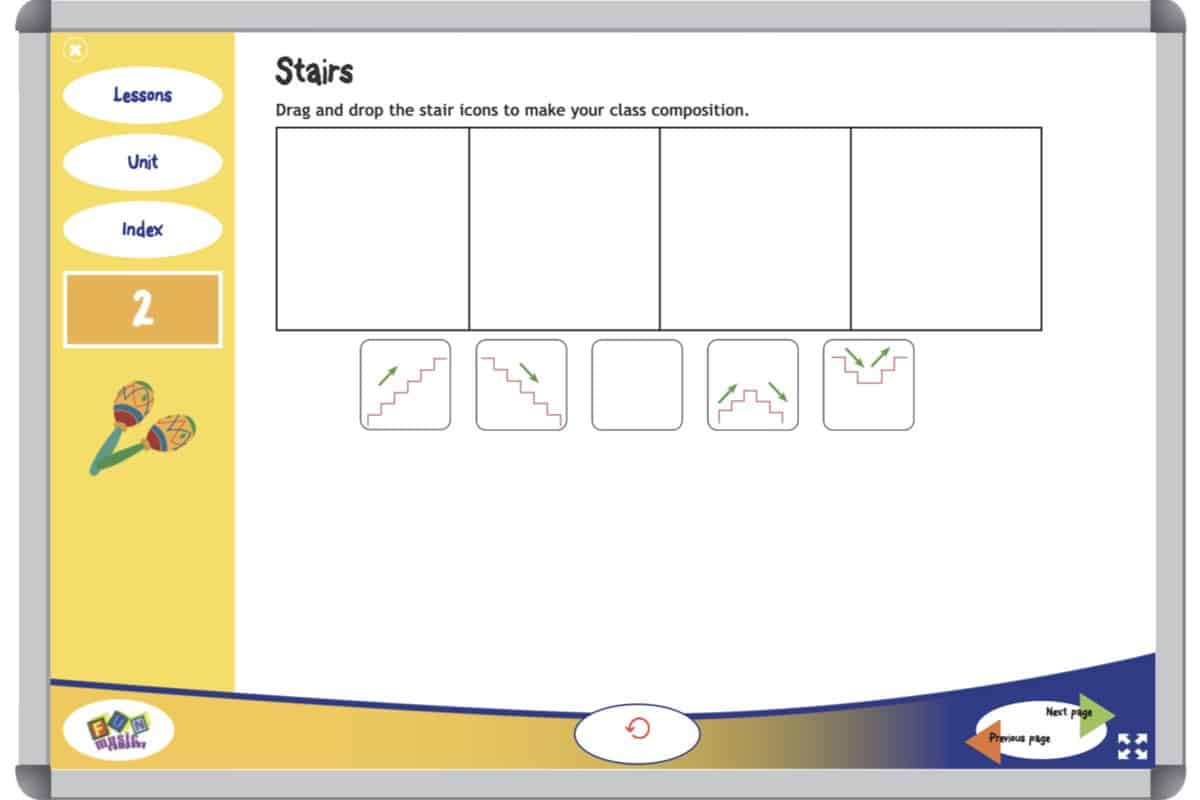


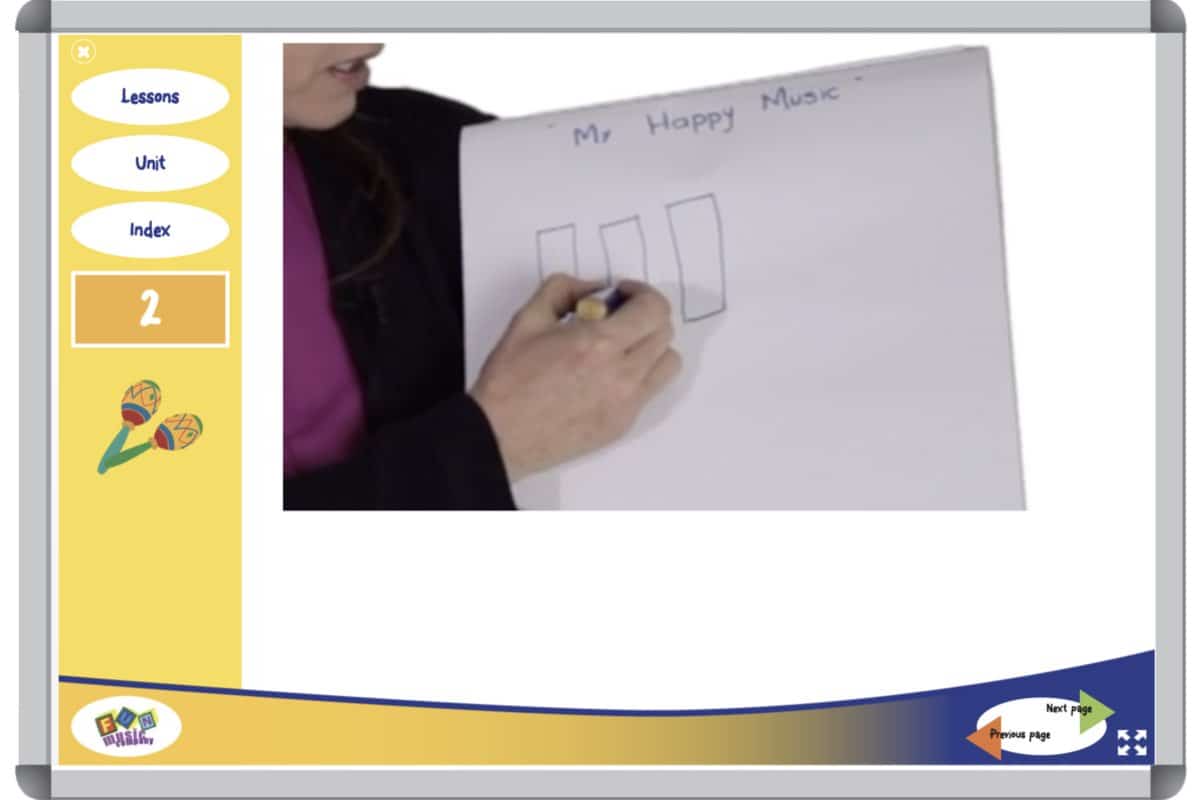
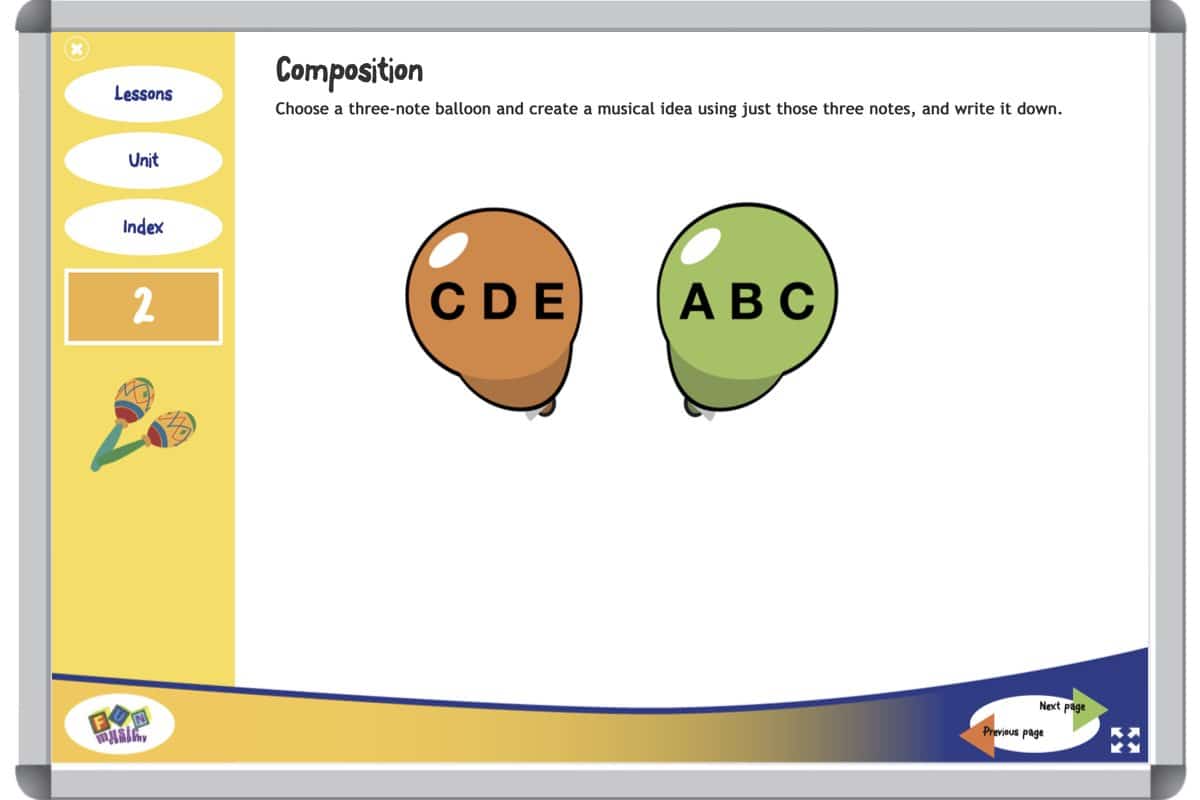
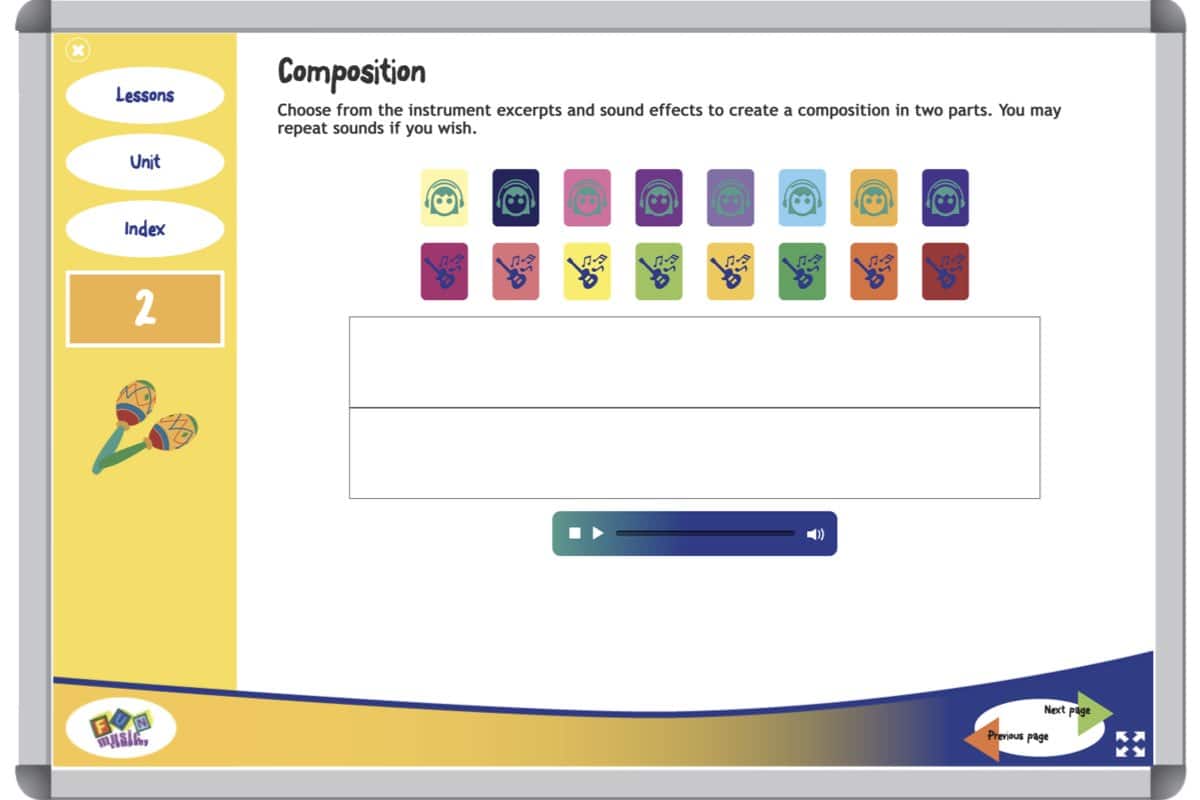
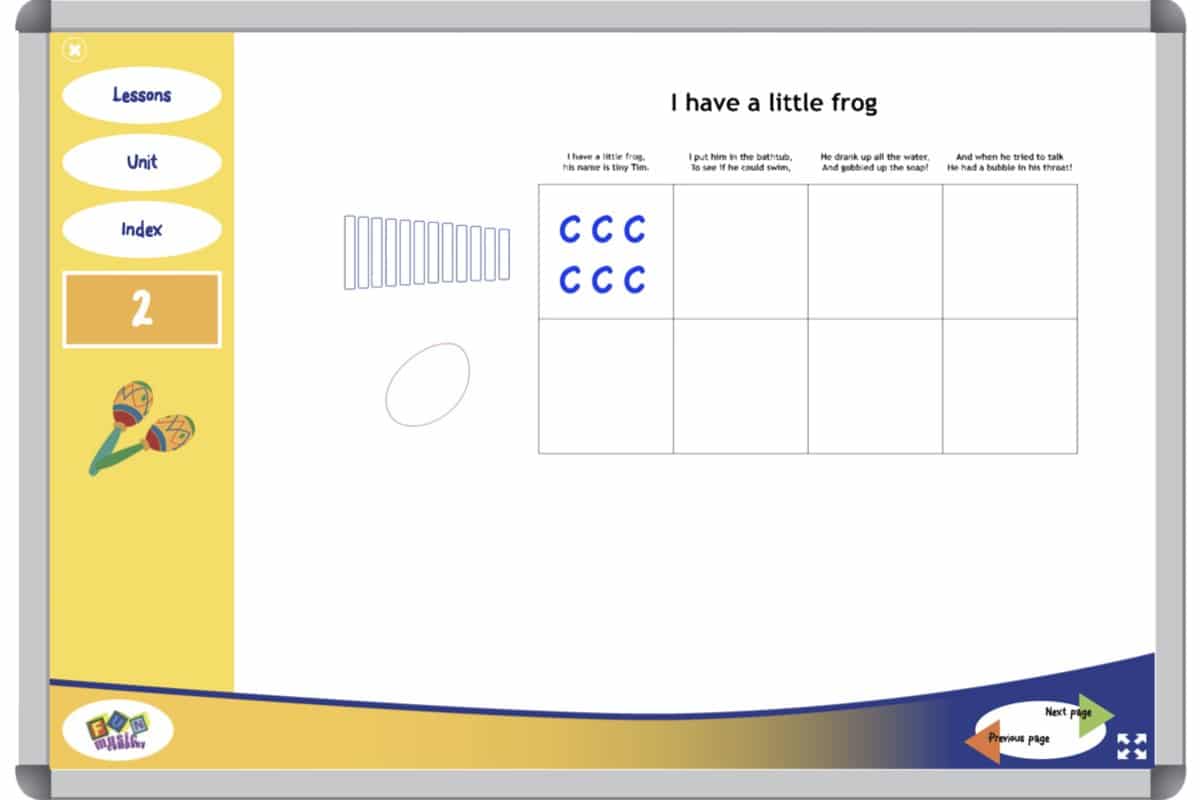
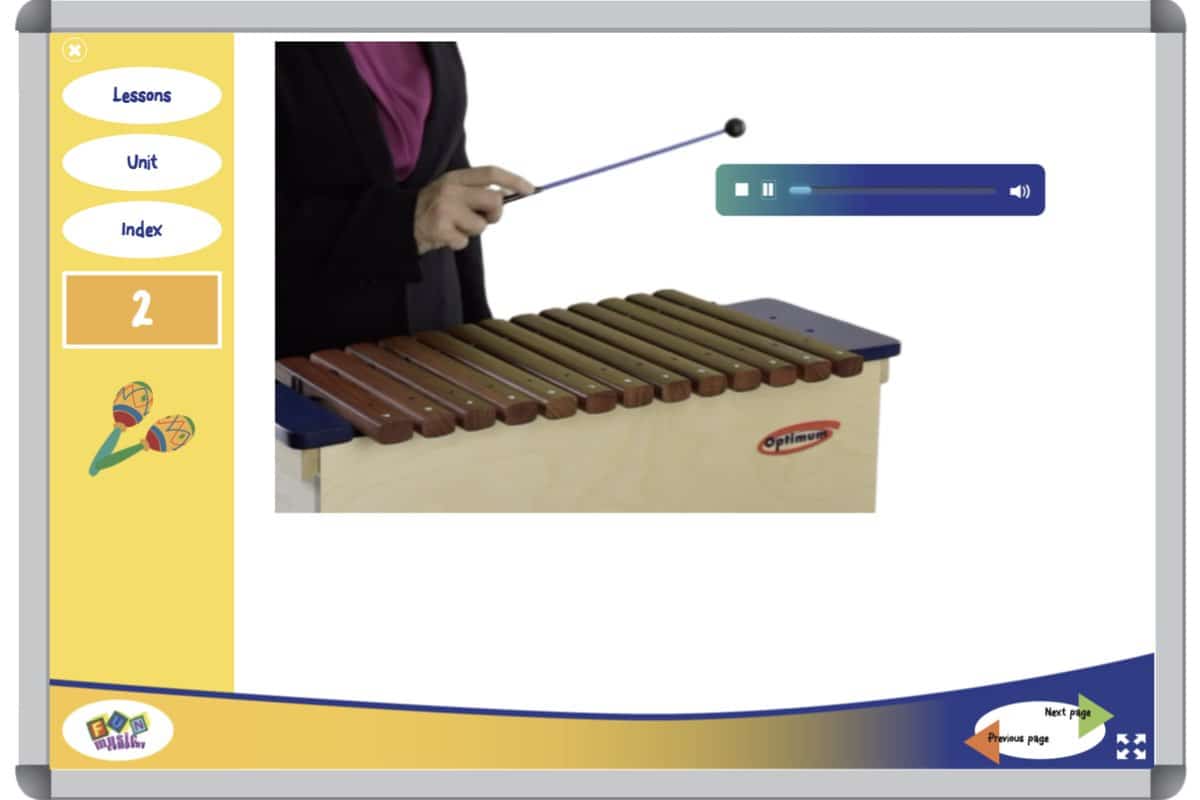
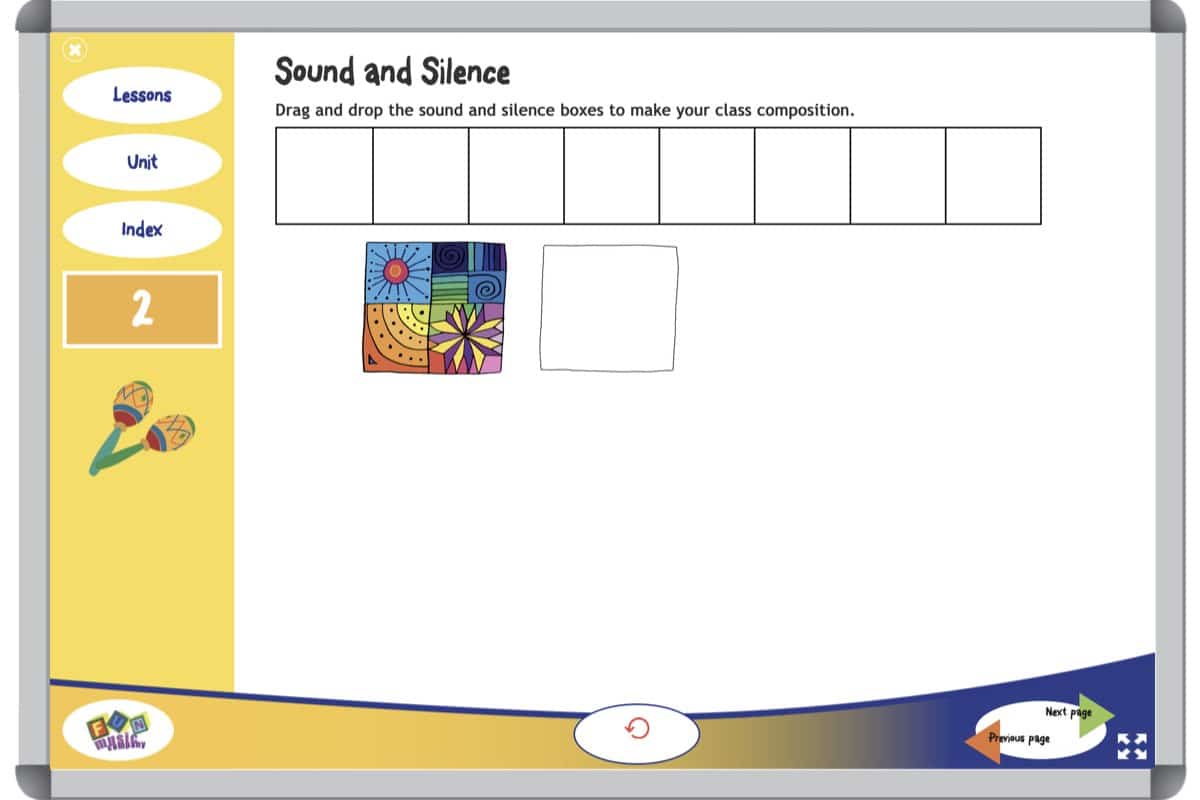
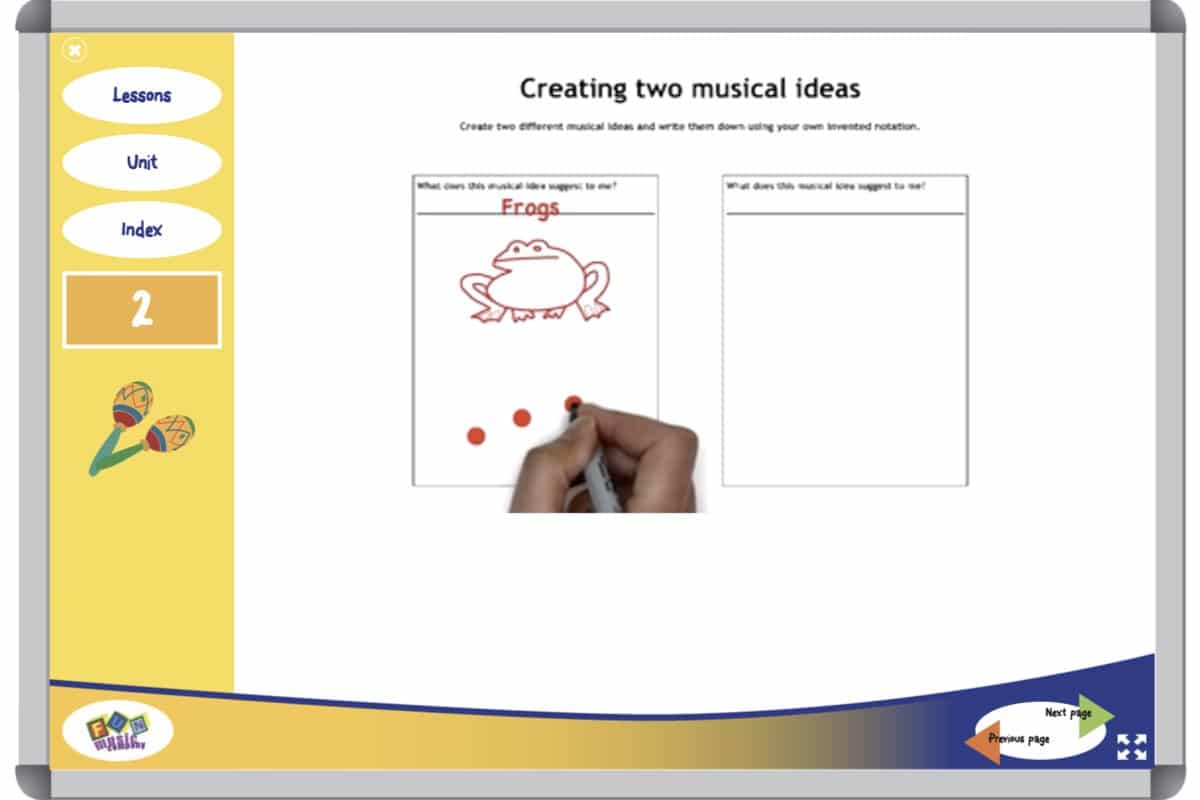

I loved the comparison between teaching Art and Music ! So true yet I had not thought of this comparison!
I’m in a small school with several year groups is my music classes – last year the Ukulele Curriculum saved me as the mixed ages love the visuals in a world of screens . (And the back up bands )
This term we have been following the bucket drumming as an introduction to playing music – again the kids love it and ask to do it again. The students are eager for the music classes – and so am I ! Thank you !
Thankyou so much Susan! Great to hear that your students enjoyed the Ukulele materials last year, and are into the bucket drumming too. Keep in touch and let us know you get on with the program.